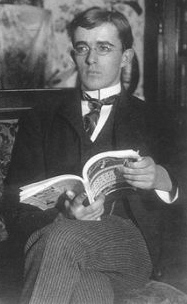January 31: Irving Langmuir
Irving Langmuir (1881)
It was on this date, January 31, 1881, that American chemist Irving Langmuir was born in Brooklyn, NY. He was educated in the US and France, and graduated as a metallurgical engineer from Columbia University in 1903. He was awarded his Ph.D. in Physical Chemistry at Göttingen in 1906, but studied physics and engineering as well.
Langmuir is chiefly remembered for coining in 1923 the physics term "plasma" to describe a fourth state of matter, distinct from solid or liquid or gas and present in stars and fusion reactions, such as that which powers the sun. He was awarded the 1932 Nobel Prize in Chemistry.
A true scientist, Langmuir was deeply skeptical of shortcuts to knowledge. Consequently, he formulated "Irving Langmuir's Symptoms of Pathological Science," a list of six characteristics common to pseudoscience:
(1) The maximum effect that is observed is produced by a causative agent of barely detectable intensity, and the magnitude of the effect is substantially independent of the intensity of the cause.
(2) The effect is of a magnitude that remains close to the limit of detectability; or, many measurements are necessary because of the very low statistical significance of the results.
(3) Claims of great accuracy.
(4) Fantastic theories contrary to experience.
(5) Criticisms are met by ad hoc excuses thought up on the spur of the moment.
(6) Ratio of supporters to critics rises up to somewhere near 50% and then falls gradually to oblivion.
Irving Langmuir died on 16 August 1957. When asked about his inattention to religion, Langmuir once responded, "Never believe anything that can't be proved."*
* Albert Rosenfeld, `The Quintessence of Irving Langmuir+, Oxford, NY: Pergamon Press, 1966.
Originally published January 2004 by Ronald Bruce Meyer.


